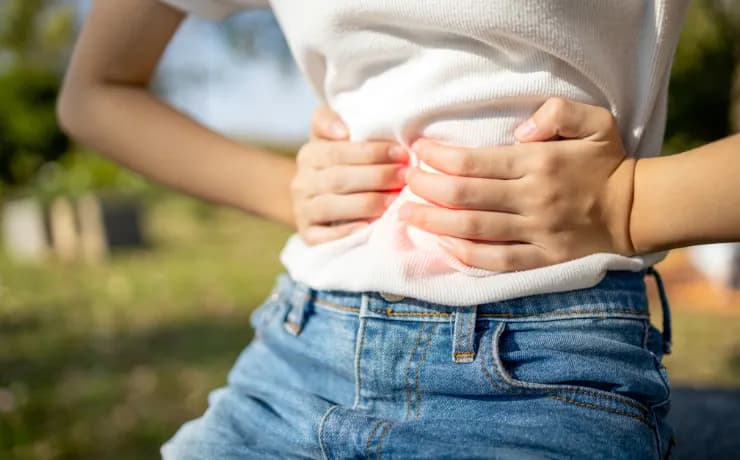Stomach Flu vs Food Poisoning – Key Differences and Treatment

Digestive upset can be caused by a variety of factors, but two common culprits are the stomach flu and food poisoning. While both conditions can cause nausea, vomiting, diarrhea, and abdominal discomfort, they have different causes, timelines, and treatment approaches. Understanding the differences can help you manage symptoms safely and know when to seek medical care.
At Farmington Drugs, we guide patients on safe remedies, hydration, and medications to help relieve discomfort and support recovery.
What Is the Stomach Flu?
The stomach flu, also called viral gastroenteritis, is caused by a viral infection that inflames the stomach and intestines. It is highly contagious and can spread through:
-
Contact with an infected person
-
Contaminated food or water
-
Touching surfaces with the virus and then touching your mouth
Common Symptoms of Stomach Flu
-
Nausea and vomiting
-
Diarrhea
-
Abdominal cramps or pain
-
Low-grade fever
-
Fatigue and muscle aches
Symptoms usually appear within 1–3 days of exposure and can last from a few days up to a week.
What Is Food Poisoning?
Food poisoning, or foodborne illness, occurs when you consume food or drinks contaminated with bacteria, viruses, or parasites. Unlike viral gastroenteritis, the primary source is usually contaminated food or beverages.
Common Symptoms of Food Poisoning
-
Sudden onset nausea and vomiting
-
Diarrhea, sometimes bloody
-
Abdominal cramps and pain
-
Fever (may vary depending on the type of contaminant)
-
Fatigue or dehydration
Symptoms often appear more quickly than with the stomach flu, sometimes within hours after eating contaminated food, and usually resolve within a few days, although severe cases may require medical attention.
Key Differences Between Stomach Flu and Food Poisoning
| Feature | Stomach Flu | Food Poisoning |
|---|---|---|
| Cause | Viral infection | Contaminated food or drink (bacteria, virus, parasite) |
| Onset | 1–3 days after exposure | Hours to a day after consuming contaminated food |
| Contagious | Yes | Usually not contagious (except in some viral cases) |
| Duration | 1–7 days | 1–3 days (may be longer for severe cases) |
| Fever | Common | Possible |
| Vomiting/Diarrhea | Common | Common, sometimes severe |
Managing Symptoms at Home
Most cases of stomach flu and mild food poisoning can be managed safely at home with proper care.
1. Hydration
-
Drink plenty of water to replace lost fluids.
-
Oral rehydration solutions or electrolyte drinks help restore salts and minerals lost through vomiting and diarrhea.
2. Diet Adjustments
-
Start with bland foods such as rice, toast, bananas, or applesauce once nausea subsides.
-
Avoid fatty, spicy, or heavily seasoned foods until your digestive system recovers.
-
Eat small, frequent meals rather than large portions.
3. Rest
-
Allow your body time to recover by getting adequate sleep and avoiding strenuous activity.
4. Safe Over-the-Counter Medications
-
Anti-diarrheal medications: May help reduce diarrhea, but consult a pharmacist first, especially for children.
-
Anti-nausea remedies: Can relieve nausea, but should be used according to age and dosing instructions.
-
Pain relievers: For mild fever or cramps, some medications can provide relief. Always follow dosing instructions and check for interactions with other medications.
Important: Always consult a pharmacist or healthcare provider before giving OTC medications to children, or if you have chronic health conditions.
When to Seek Medical Attention
Although most cases are mild, there are times when professional care is necessary:
-
Signs of severe dehydration (dry mouth, dizziness, reduced urination)
-
High fever (above 102°F / 38.9°C)
-
Blood in vomit or stool
-
Severe abdominal pain that does not improve
-
Symptoms lasting more than a few days without improvement
Healthcare providers can evaluate whether additional treatment, prescription medications, or hospitalization is necessary.
Preventing Future Illness
Prevention is key for both the stomach flu and food poisoning.
Tips for Stomach Flu
-
Wash hands frequently, especially after using the restroom or before eating
-
Avoid close contact with infected individuals
-
Disinfect commonly touched surfaces
Tips for Food Poisoning
-
Wash fruits and vegetables thoroughly
-
Cook meats and seafood to proper temperatures
-
Avoid unpasteurized dairy products and juices
-
Store perishable foods at correct temperatures
-
Wash hands before preparing or eating food
The Role of Your Pharmacist
Pharmacists can help you manage both stomach flu and food poisoning safely by:
-
Recommending appropriate OTC medications
-
Advising on hydration and electrolyte replacement
-
Reviewing medications to avoid interactions or complications
-
Guiding care for children, seniors, and patients with chronic conditions
At Farmington Drugs, our pharmacists are available to answer questions and provide personalized advice for safe symptom management.
Final Thoughts
While stomach flu and food poisoning share some symptoms, understanding the differences helps you manage them effectively. Most cases can be treated at home with hydration, rest, and safe OTC medications.
Farmington Drugs is here to provide guidance on medications, hydration solutions, and when to seek medical care. By staying informed and taking preventive measures, you can reduce discomfort and recover safely from digestive illnesses.





